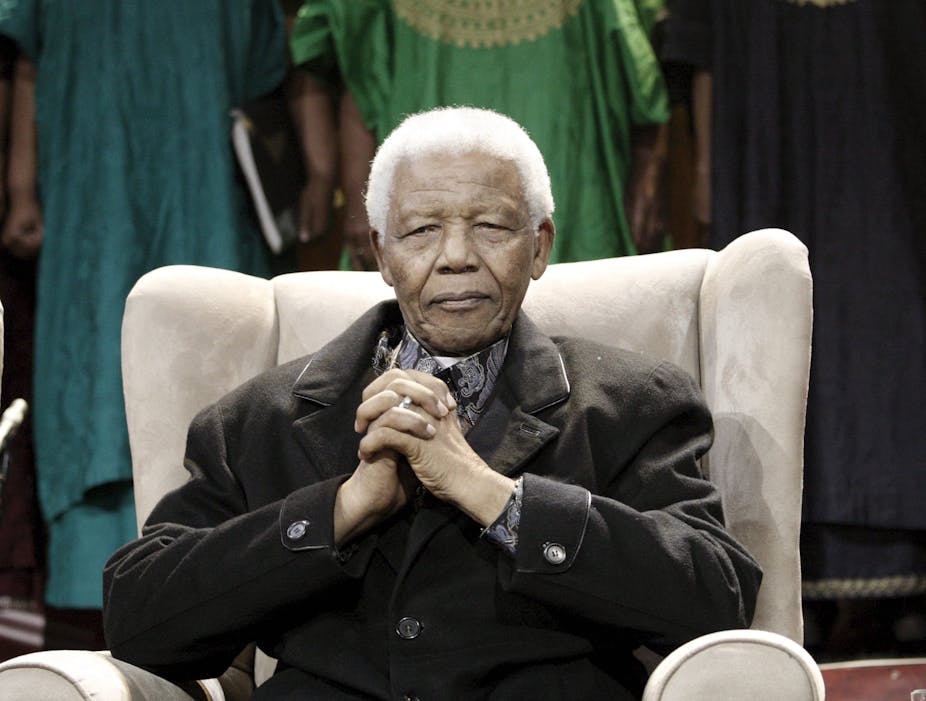Nelson Mandela, the first black president of South Africa, has died at the age of 95.
The fears of South Africa, the nation that once was deeply divided in its perceptions of Mandela, have now been realised. This man, who inspired dread in the white apartheid regime, which labelled him a “terrorist” and imprisoned him for 27 years, inspired such love that South Africa’s greatest concern was losing him.
His presence was a constant beacon of hope and guidance as South Africa battled its inner demons to achieve the fair and just society that was Mandela’s dream. But what does the future hold for South Africa now that he has passed?
In 1964, Mandela was sentenced to life imprisonment on charges of incitement to sabotage, treason and violent conspiracy against the South African regime. He was described as a leader of the “swart gevaar” (an Afrikaans term literally meaning black danger). This was the white minority’s perception of the political and physical threat presented by the black people living alongside them.
Describing the battle for political power in South Africa as one between white and black people is to oversimplify the challenge that faced Mandela when he became a free man. Understanding the diversity of this nation is to understand the miracle Mandela achieved in eventually becoming a man universally admired and loved for his compassion and integrity.
South Africa is not black and white, but consists of people with ethnic origins stemming as far back as the aboriginal Khoikhoi people (who have lived on the southern tip of Africa for millennia), ethnic origins from north and east Africa, Europe, Asia and India. And then there are those whose ethnicity is mixed. Add to that religious, cultural, language and tribal differences as well as myriad political beliefs.
During apartheid, there were those who cared only for the African indigenous population, there were communists and democrats and separatists. Whites were not uniform in their support of apartheid. The most prominent member of the officially recognised opposition party was a white Jewish woman, Helen Suzman. Many whites were members of the African National Congress (ANC) and many blacks felt their future lay in an alliance with the apartheid regime.
The whisperings about the release of Mandela began in the 1980s. This was also a decade of violent turmoil. Little was known about the man imprisoned on Robben Island. All information about him had been ruthlessly suppressed by the regime, ironically fuelling his mystique. His image was surrounded by a complex mythology: he was a martyr, saviour, avenger or destroyer.
But did South Africans know the true heart of the man who began his long walk to freedom on a sunny day in February 1990? And did Mandela, as he entered a new reality, feel the crushing weight of conflicting expectations of the nation and a watchful world?
When Nelson Mandela stood before the Union Buildings in 1994, he achieved something that was inconceivable a mere decade earlier: he became South Africa’s first ever black president.

Mandela started upon a journey that was daunting: how to unite a traumatised, divided, angry and fearful nation. Many expected that his reign would bring vengeance, retribution and civil war. Instead, his message was one of reconciliation and forgiveness.
At first this was incomprehensible. Whites expected to be “driven into the sea” – a commonplace threat - and stalwarts of the struggle for freedom expected retribution for years of suffering under the yoke of apartheid. How could a man who had suffered for so long not want revenge for himself and his people?
But Mandela surprised everyone because he believed his role was to lead everyone to the “holy land”. His leadership message was consistent for the past 23 years; his values and beliefs steadfast and unstinting while he walked the long, uphill road. It is extraordinary that through the strength of his personality and will, he led the nation away from the brink of war and inspired the blossoming of hope.
Mandela’s message slowly took root in South African soil and for the first time the country became known as the “Rainbow Nation”, in Archbishop Desmond Tutu’s words, a symbol of acceptance and pride in its diversity.
The extent of the belief in Mandela was undeniable when he stepped down as president in 1999. Collectively, South Africans feared the country would plunge into turmoil once again without his steady hand on the tiller. And yet it did not; perhaps Mandela’s quiet moral presence remained a stabilising influence behind the scenes. The country believed it could still turn to him in times of trouble.
But now South Africa is trying to come to terms with the fact that the man who has become a global icon and symbol of morality has left it forever. It is experiencing the same fearful emotions all over again. In the past, South Africans have avoided talking about the demise of “the father of the nation”.
South Africa is being forced to come to terms with the fact that Mandela has passed. I have long feared this day, and yet I have to believe that the legacy he left us will forever be in the DNA of South Africa and carry us forward, no matter what.

